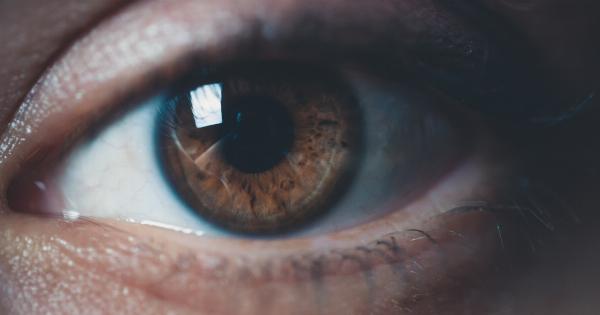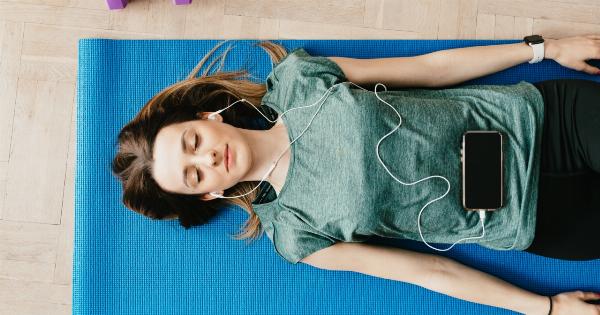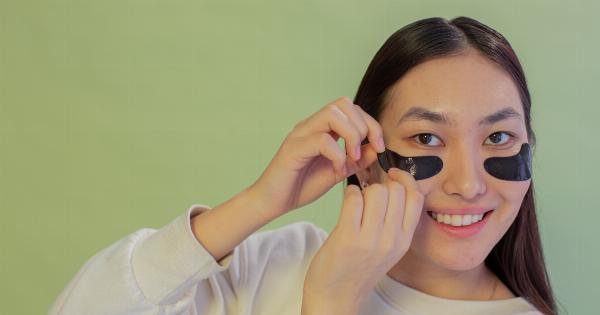Our eyes are one of the most important sensory organs, constantly working to take in the world around us. With the increasing use of digital devices in our daily lives, our eyes are subjected to more strain than ever before.
This can lead to problems like eye fatigue, dryness, and even eye strain headaches. It is crucial to take regular breaks and provide rest to our eyes to avoid long-term damage. In this article, we will discuss 30 simple and fast methods to relax your eyes and keep them healthy.
1. Palming
Palming is an easy and effective way to relax tired eyes. Simply rub your palms together vigorously until they feel warm. Close your eyes and cover them with your warm palms, ensuring there is no pressure on the eyeballs.
Sit in this position for a few minutes and visualize darkness. This simple technique helps improve blood circulation and provides a soothing effect to your eyes.
2. Blinking Exercises
Blinking is a natural process that helps lubricate our eyes with tears and minimize dryness. However, we tend to blink less frequently when using digital devices, leading to dry and strained eyes.
Perform blinking exercises by closing your eyes firmly for a few seconds and then opening them wide. Repeat this process several times to refresh your eyes and prevent dryness.
3. The 20-20-20 Rule
Follow the 20-20-20 rule to prevent eye strain. Every 20 minutes, take a 20-second break and focus your gaze on an object at least 20 feet away. This exercise relaxes the eye muscles and reduces the risk of eye fatigue caused by prolonged screen time.
4. Eye Massage
Gently massaging the areas around your eyes can help relieve tension and improve blood circulation. Using your index or middle finger, apply gentle pressure in circular motions on your temples, eyebrows, and under-eye areas.
This technique can be practiced multiple times a day for instant relaxation.
5. Warm Compress
Applying a warm compress to your eyes can help relax the muscles and reduce eye strain. Dip a clean cloth in warm water, wring out the excess moisture, and place it over your closed eyes for a few minutes.
This soothing technique helps relieve dryness and revitalizes tired eyes.
6. Cold Compress
Cold compresses are effective in reducing eye puffiness and soothing tired eyes. Take a soft cloth and soak it in cold water. Squeeze out the excess water and place the cold compress on your closed eyelids for a few minutes.
The cold temperature helps constrict blood vessels and reduces eye swelling.
7. Eye Exercises
Performing regular eye exercises can improve focus and relieve eye strain. You can try exercises like eye rolls, focusing on near and far objects, or moving your eyes in different directions.
These exercises strengthen eye muscles and promote overall eye health.
8. Adjust Screen Brightness and Position
Ensure that your digital devices’ screen brightness matches the ambient lighting to minimize eye strain. Additionally, position your screen at a comfortable distance and angle, keeping it slightly below eye level.
Correct positioning reduces the strain on your eyes and prevents dryness.
9. Use Blue Light Filters
Blue light emitted by digital screens can cause eye strain and disrupt sleep patterns. Apply blue light filters or use specialized glasses that block or minimize this harmful light.
These filters help protect your eyes from the adverse effects of prolonged screen exposure.
10. Take Regular Breaks
One of the most important ways to relax your eyes is to take regular breaks from screen time. Follow the 20-20-20 rule mentioned earlier, and consider taking short breaks every hour to let your eyes rest and refocus.
Use these breaks to stretch your body and relax your mind as well.
11. Adjust Font Size and Contrast
When reading or working on digital devices, ensure that the font size and contrast are comfortable for your eyes.
Avoid straining to read small text and adjust the settings to a size and contrast that allows you to read effortlessly, reducing eye fatigue.
12. Follow Proper Lighting
Proper lighting is essential to prevent eye strain. Avoid working or reading in dimly lit or excessively bright environments. Ensure a balanced lighting setup that illuminates the surroundings without causing glare on your screen or straining your eyes.
13. Hydrate Your Eyes
Keep your eyes hydrated by blinking regularly and using lubricating eye drops or artificial tears. Dry eyes can cause discomfort and lead to eye strain. Use eye drops recommended by your healthcare professional to maintain proper eye moisture.
14. Limit Screen Time Before Bed
Exposure to screens before bedtime can interfere with sleep quality. Blue light suppresses the production of melatonin, a hormone that regulates sleep.
Minimize screen time at least an hour before bed and engage in relaxing activities to prepare your mind and eyes for a restful sleep.
15. Practice Eye Yoga
Eye yoga exercises focus on strengthening eye muscles and relieving eye strain. These exercises involve moving your eyes in various patterns, such as side-to-side, up and down, and circular motions.
Incorporate eye yoga into your routine for improved eye health.
16. Ensure Proper Distance
Maintain an adequate distance between your eyes and the screen when using digital devices. Sitting too close can strain your eyes, leading to discomfort and blurry vision. Position yourself at an arm’s length distance to minimize eye strain.
17. Use Artificial Tears
If your eyes feel dry and irritated, consider using artificial tears or lubricating eye drops. These drops provide immediate relief by moistening your eyes and reducing dryness.
Consult an eye care professional for suitable eye drops that match your specific needs.
18. Avoid Eye Rubbing
Refrain from rubbing your eyes vigorously, as it can cause irritation and increase the risk of infection. If your eyes feel itchy or dry, use eye drops or gently splash your face with cold water to alleviate discomfort.
19. Follow a Balanced Diet
Eating a nutritious diet rich in vitamins and minerals is essential for maintaining optimal eye health. Include foods like leafy green vegetables, fruits, fish, and nuts that are high in antioxidants and omega-3 fatty acids.
These nutrients support eye function and reduce the risk of eye diseases.
20. Get Adequate Sleep
Adequate sleep is crucial for overall eye health and preventing eye strain. Lack of sleep can cause dry and irritated eyes, leading to visual disturbances and fatigue.
Aim for 7-8 hours of quality sleep every night to ensure your eyes receive the rest they need.
21. Reduce Screen Brightness
Lowering the brightness of your digital screens reduces the strain on your eyes. Adjust the brightness level to match your comfort and avoid excessive glare. Decreasing screen brightness also helps conserve battery life on your devices.
22. Use Eye-Friendly Supplements
Some supplements, like omega-3 fatty acids, vitamin C, vitamin E, and zinc, are known to benefit eye health. Consult your healthcare professional before starting any supplements to determine the appropriate dosage for you.
23. Avoid Smoking
Smoking has been linked to an increased risk of developing macular degeneration and other eye conditions. Quitting smoking not only improves your overall health but also reduces the risk of eye diseases caused by smoking-induced oxidative stress.
24. Maintain a Good Posture
Ensure you maintain a good posture when working or reading. Sit up straight with your back supported and your screen at eye level. This helps prevent strain on your neck, shoulders, and eyes.
25. Use Anti-Glare Screens
If you work in a setting with excessive glare, consider using anti-glare screens or applying anti-glare filters to your existing devices. These screens minimize reflections and glare, reducing eye strain and discomfort.
26. Practice Facial Exercises
Engaging in facial exercises can indirectly benefit your eye health by reducing overall tension and improving blood circulation.
Simple exercises like gentle face massages, facial yoga, or relaxing facial stretches alleviate stress and promote eye relaxation.
27. Limit Caffeine Intake
Excessive caffeine consumption can contribute to eye twitching and spasms. Limit your intake of caffeinated beverages and replace them with hydrating options like water or herbal teas.
28. Take Eye-Healthy Supplements
Incorporate eye-healthy supplements like lutein, zeaxanthin, bilberry extract, and astaxanthin into your routine. These supplements support eye health and provide additional protection against oxidative stress.
29. Avoid Continuous Near Work
Extended periods of near work, such as reading or working on a computer, can strain your eyes. Take regular breaks and shift your focus to distant objects to reduce eye strain. Frequent breaks help relax the eye muscles and prevent discomfort.
30. Regular Eye Check-Ups
Lastly, don’t forget to schedule regular eye check-ups with an optometrist or ophthalmologist. Routine eye exams help detect any potential issues at an early stage, ensuring timely intervention and treatment.


























